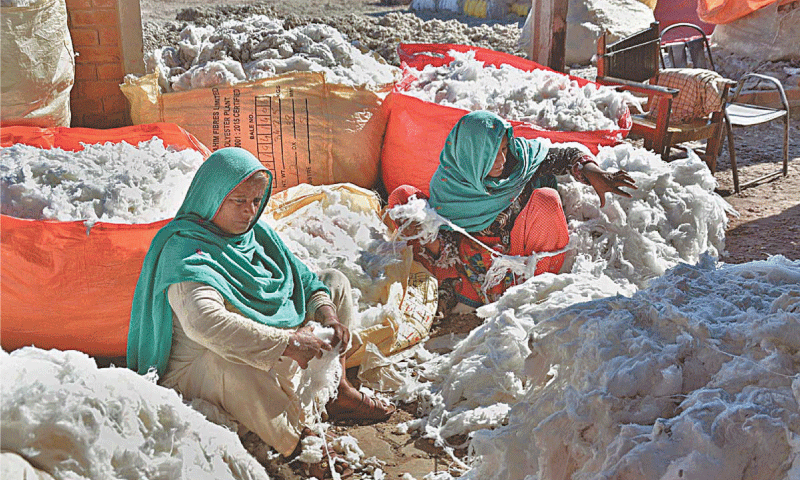Textile units not buying lint for liquidity crunch
04 March, 2023

White lint stock is piling up with the ginners as textile millers are wary of making the purchases because of what market players believe liquidity crunch and high markup rate besides other factors.
Ginning units across the country are holding 449,315 bales on March 3, 379 per cent up against 93,833 bales on the same date last year, reveals the data shared by the Pakistan Cotton Ginners Association (PCGA) on Friday.
Textile millers have so far bought over 4.421 million bales by March 3 as compared with 7.332m bales they had purchased during the same period last year, a year-on-year drop of 39.70pc.
During the period, the total cotton arrivals at ginning factories were reported to be more than 4.875m bales against over 7.441m bales last season, a decline of 34.49pc.
The decline in cotton arrivals is attributed to the flash floods in Pakistan, which devastated large swathes of agricultural land in the country, especially in Sindh and Balochistan provinces. Cotton is an essential raw material for the country’s textile sector and the development is alarming for Pakistan’s cash-strapped economy, which is already facing depleting foreign exchange reserves that stood at $3.81 billion, barely enough for one month of imports.
Export of lint also dropped this year despite a strong demand in foreign markets as against only 4,900 bales so far, at least 11,000 bales had been exported the previous year, showing a fall of 69.38pc.
Suhail Mehmood Harral, a ginner, tells Dawn that liquidity shortage and ever higher 24pc markup rates are barring the textile millers from holding stocks for longer periods.
“The millers feel that they will make the purchases if and when needed instead of stocking lint with them at a whooping higher interest rate.”
Karachi Cotton Brokers Forum Chairman Naseem Usman endorses the views saying the highest ever interest rate in the country coupled with increasing costs of labour, energy and raw material are making the industry wary of investment.
He says that cotton was cheaper last season, whereas this year its rates are higher from day one.
Meanwhile, the PCGA data reported a steep fall in cotton arrivals from Sindh.
As of March 1, cotton arrivals in Sindh were 1.879m bales as compared to 3.513m bales in the same period last year, a decrease of 1.664m bales or 46.5pc. Month-on-month basis, cotton arrivals remained stagnant with an improvement of 0.5pc as compared to 1.871m bales arrived on February 1.
Similarly, cotton arrival in Punjab clocked in at 2.996m bales as compared to 3.929m bales reported during the same period last year, a decline of 23.7pc. However, it recorded a marginal increase of 3.6pc month-on-month basis as compared to 2.893m bales arrived on Feb 1.
Last month, the All-Pakistan Textile Mills Association (Aptma) urged the federal government to provide a level playing field by implementing a uniform gas price of $7 per mmBtu for the export industry across the country.
It had warned that the decision of the government to suspend the regionally competitive energy tariff of electricity for Export Oriented Units would hurt the textile industry, particularly in Punjab.
Useful Links:
Source: www.dawn.com
